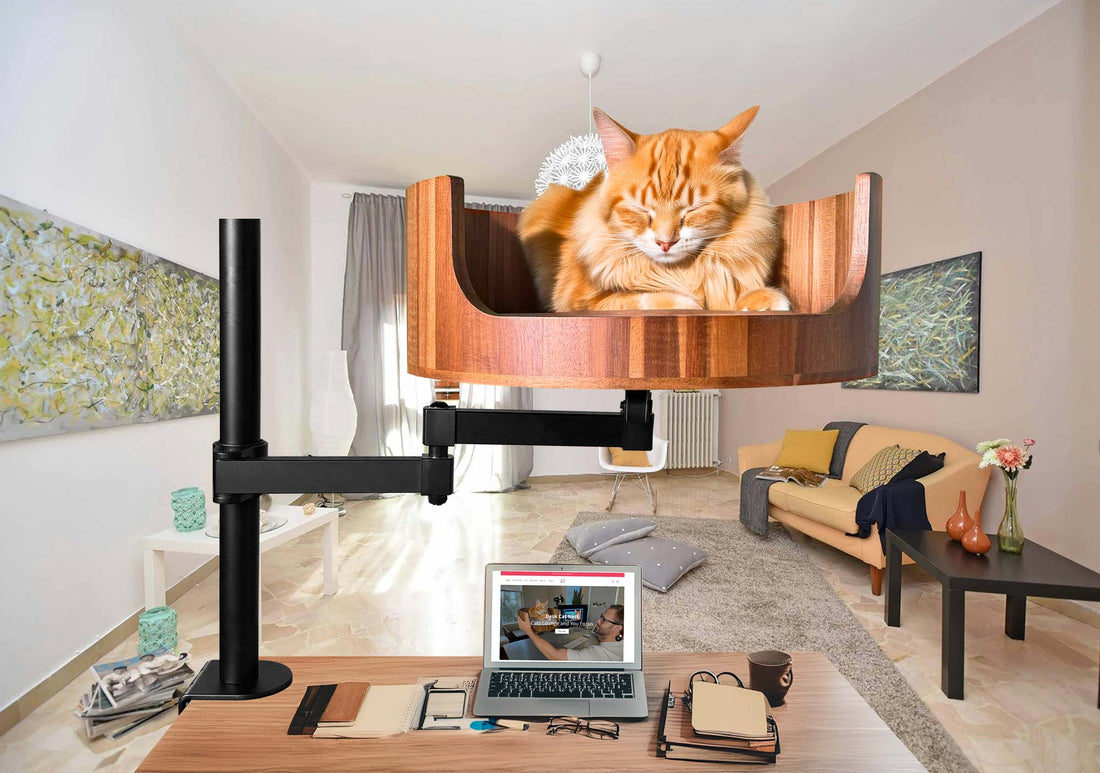
Why Cats Cry: Understanding Their Emotional Needs
Share
If you've ever heard your feline friend crying in the middle of the night, you may have wondered what's causing their distress. Cats are known for their independent nature, but they also have emotional needs that can impact their behavior. In this article, we'll explore why cats cry and how understanding their emotional needs can help us better care for our beloved pets.
From separation anxiety to territorial disputes, cats cry for a variety of reasons. As pet owners, it's important for us to recognize the signs of distress in our feline companions and address their emotional needs. By delving into the psychology behind their cries, we can better understand what our cats are trying to communicate to us. Stay tuned as we explore the reasons why cats cry and how we can provide them with the love and support they need to thrive.
1. Cats cry to communicate their emotional needs, such as hunger, boredom, or stress.
2. Understanding their body language and vocalizations can help you decipher what your cat is trying to tell you.
3. Providing a comfortable and safe environment, along with regular playtime and mental stimulation, can prevent excessive crying.
4. Regular vet check-ups are essential to rule out any underlying medical conditions that may be causing your cat's distress.
5. Building a strong bond with your cat through affection and attention can help alleviate their emotional stress and reduce crying behavior.
## The Importance of Understanding Cat Behavior
Understanding cat behavior is crucial in providing proper care for our feline companions. Cats communicate through a variety of vocalizations, body language, and behaviors, including crying. By understanding why cats cry, we can better meet their emotional needs and ensure their overall well-being.
## Common Reasons Why Cats Cry
There are several common reasons why cats cry, including hunger, stress, loneliness, pain, and attention-seeking behavior. Hunger cries are typically loud and persistent, while stress-related cries may be accompanied by other signs of anxiety, such as hiding or excessive grooming. Loneliness cries often occur when a cat is left alone for long periods, and pain-related cries may signal underlying health issues that need immediate attention.
## Crying as a Form of Communication
Crying is a natural form of communication for cats, especially when they are trying to express their needs or emotions. By paying attention to the context and frequency of your cat's cries, you can better understand what they are trying to communicate. For example, a cat meowing at the door may be signaling a desire to go outside, while a cat crying during grooming may indicate discomfort or pain.
## Responding to Your Cat's Cries
Responding to your cat's cries in a timely and appropriate manner is essential for building a strong bond and meeting their emotional needs. By providing comfort, attention, or addressing any underlying issues causing the crying, you can help your cat feel secure and loved. It's important to observe your cat's behavior and body language to determine the best course of action in response to their cries.
Frequently Asked Questions
Why do cats cry?
Cats cry for various reasons, such as hunger, loneliness, boredom, or stress. They may also cry if they are in pain or discomfort. Providing a comfortable and safe environment for your cat can help reduce excessive crying.
Will the Desk Cat Nest help reduce my cat's crying?
The Desk Cat Nest can provide a cozy and comfortable space for your cat to relax and feel secure. It may help reduce your cat's crying by giving them a designated area to retreat to when they feel overwhelmed or anxious.
How should I introduce the Desk Cat Nest to my cat?
When introducing the Desk Cat Nest to your cat, place it in a quiet and familiar area where your cat likes to spend time. You can add some treats or toys inside the nest to encourage your cat to explore and use it. Be patient and allow your cat to adjust to the new space at their own pace.
Is the Desk Cat Nest suitable for all cat breeds?
The Desk Cat Nest is designed to accommodate cats of various sizes and breeds. However, some cats may have specific preferences when it comes to their bedding or resting spots. It's essential to observe your cat's behavior and adjust the nest accordingly to make it more appealing to them.
Can the Desk Cat Nest help with separation anxiety in cats?
While the Desk Cat Nest may provide a sense of security and comfort to cats, it may not be a cure for separation anxiety. It can be used as a tool to create a relaxing space for your cat when you are not around, but additional steps may be needed to address separation anxiety, such as behavior modification or seeking advice from a veterinarian.
In conclusion, the Desk Cat Bed is a valuable choice for cat owners looking to alleviate their pet's crying behavior. By providing a comfortable and secure space for cats to rest and relax, this innovative product offers a solution to common stressors that may trigger crying in felines. The Desk Cat Bed's cozy design, durable materials, and easy assembly make it a practical and convenient option for enhancing your cat's well-being and reducing their distress. Say goodbye to unnecessary tears and say hello to a content and happy cat with the Desk Cat Bed.



















































